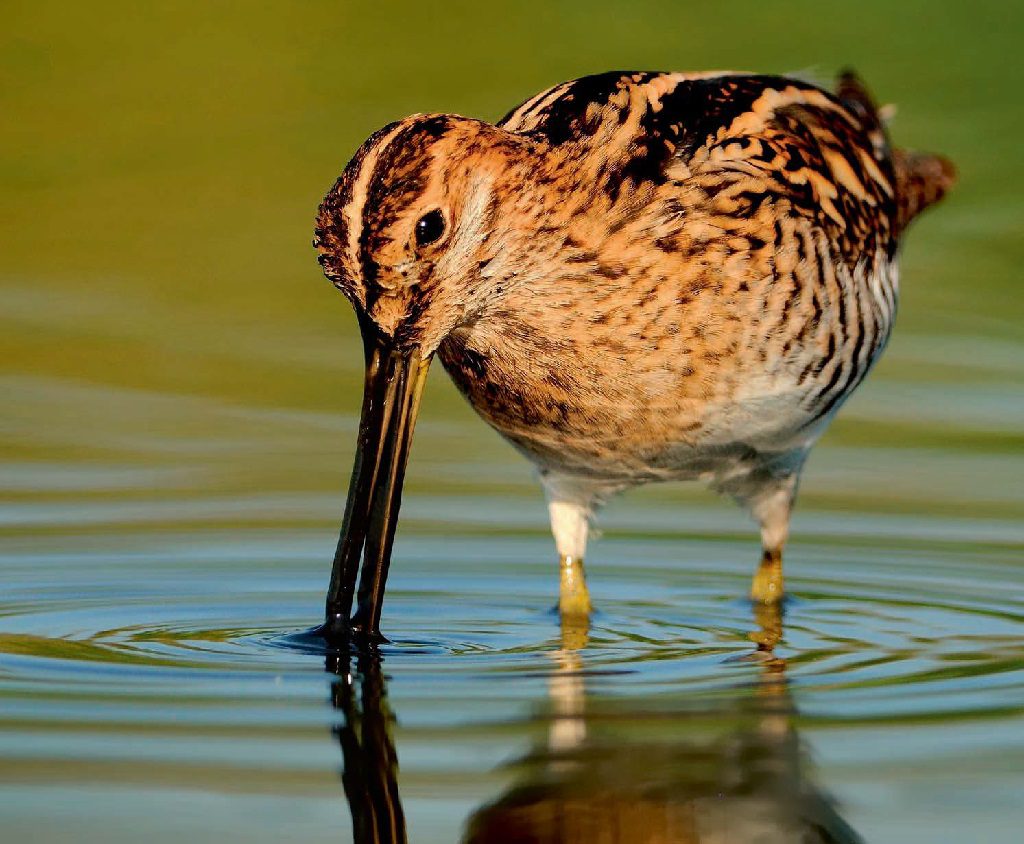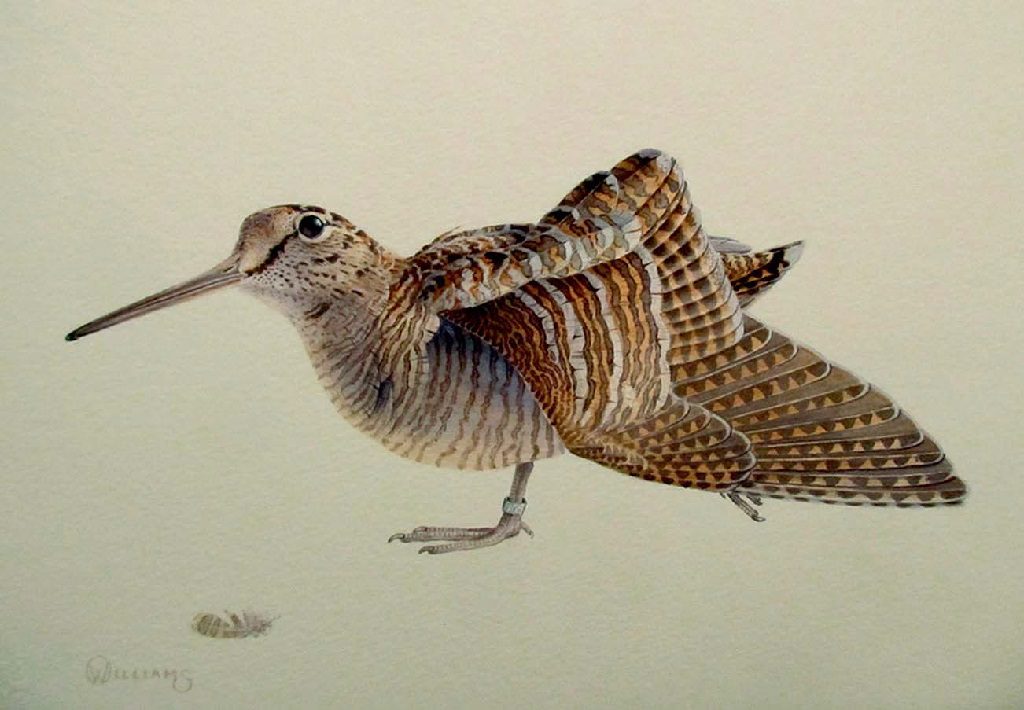
Wading in to help save Scotland’s woodcock
The past decade has seen a serious decline in our woodcock population – it’s time to find out why.
A spring woodland, coloured with the final rosy hues of gloaming as a thrush sings its last aria before nightfall. A woodcock passes back and forth overhead: its silhouetted outline is ethereal against the bruises of the evening sky, while the sound of its strange ‘roding’ call during the breeding season is eerily enticing.
The woodcock, a rounded wader with a long probing bill, camouflaged russet plumage and dark eyes set to the sides of its head (allowing 360° vision), is one of the most mysterious of all British birds. The strange grunting croak it emits while airborne is likened to that of a frog, and ends each time with a bizarre squeak. The bird’s shy, crepuscular nature merely adds to its otherworldliness. It has instilled awe in naturalists and sportsmen for centuries.
During the 1700s, the poet John Gay wrote:
He sung where woodcocks in the summer feed
And in what climates they renew their breed:
Some think the northern coasts their flight they tend
Or to the moon in midnight hours ascend.
Gay was not alone in believing that the country’s wintering population of woodcock had lunar longings; it was generally believed that it took the birds two months to fly to the moon, where they resided for three months before returning.
Though large numbers of woodcock, known as ‘falls’, appeared particularly during full moons in November and December, as they do today, there were no records of breeding woodcock in this country until around 1827. During the early 1900s, two intrepid Scottish ornithologists, Evelyn Baxter and Leonora Rintoul, frequently recorded the increase of breeding birds. New planting provided woodcock with an ideal habitat and they quickly became established as UK residents countrywide.
Prior to the late 15th century when there was devastating deforestation, the woodcock would have probably been a regular British breeding species.
The woodcock’s tiny, fine pin feathers, located on the leading edge of each wing, are highly prized. They were used as brushes by 19th-century artists for the intricate work of painting ivory miniatures – a few specialists keep the tradition alive, and Rolls Royce used them to add a fine gold line to the sides of its vehicles.
The feathers have adorned the rough shooter’s bonnet, while Lord Margadale’s grandmother had a more elegant use for them, with a fan comprised of 10,000 woodcock pin feathers.
The records show that the ancient Chinese saw them in a more sensual light, attaching them to a silver mount for use as a sexual stimulator.

Many woodcock come from breeding grounds in Russia
For most of us the woodcock is only barely glimpsed as it takes flight unexpectedly from the underbrush when disturbed, its strong leg muscles springing into an immediate takeoff.
A much sought-after game bird, its erratic, bat-like flight makes it one of the most challenging to shoot.
Welsh wildlife artist Owen Williams is a man whose life is governed by the woodcock. He has now trapped more than 1,700. He knows the lay of every feather, the colour variations and the birds’ perfect forms, which is why his artistic portrayals of them are so exquisite.
‘I have painted them since I was a teenager and I love the dramatic evening light that so often accompanies their roding flight,’ he says.
‘My passion for the species led to me training as a British Trust for Ornithology ringer and in 2009 I set up the Woodcock Network, which now has over 35 ringers countrywide, from Fair Isle and Rum all the way to Jersey.’
On Rum, the RSPB’s Sean Morris has been ringing woodcock since 2009. Through the process of re-trapping some of his birds, he has found that many are faithful to their wintering grounds.
Meanwhile, through ring recoveries, it has been discovered that most of them come from breeding grounds in Russia, while others are passage migrants heading south and west.
‘Working closely with the Game and Wildlife Conservation Trust (GWCT) on its Woodcock Watch project, the valuable data we collect assists the trust’s research,’ Williams continues.
‘An ancestor of the Duke of Northumberland, patron of the GWCT, was the first person to start a ringing scheme in the UK. Remarkably, Lord William Percy’s pioneering work in the late 19th century was on juvenile woodcock at Alnwick, and revealed fascinating facts about the birds and their movements.’
Woodcock breed across a huge swathe of Russia and Scandinavia, he adds, ‘And some of these birds return to west Wales, to the 250-acre patch where I do most of my ringing. There are no resident woodcock in this area. Over the past ten years there has been a serious decline, witnessed fairly uniformly across the country, and we need to know what is driving this.
‘There has been a change in woodland habitat; an explosion of deer numbers has altered the understory, meaning less cover for vulnerable broods. There is also an increase in the badger population and far more human disturbance. This shows how fragile the eco system is – what seem like small changes can have significant repercussions.’
The information is being gathered as a result of fitting geolocators and satellite tags to woodcock.

Wing Stretch by Owen Williams – the artist has been painting the birds since he was a teenager
‘It is a great resource,’ Morris explains. ‘I have always been intrigued by the migration mystery and the work we are doing is proving vital, revealing a great deal about the birds’ fidelity to both breeding and wintering sites, and the large distances they cover.’
Catching the birds is incredibly exciting, says Owen Williams, with the best results on wild wet nights when it is easier to get close to them in open fields. Having fitted 54 geolocators, he has had 11 back so far, which have provided a great deal of information.
The satellite tags are more accurate, but cost a pricey £3,000 per bird. However, they monitor exactly where the bird goes, down to an accuracy of ten metres, and can then be followed on a Google Earth map.
‘Funding comes through shooters, who support this pioneering side of the GWCT’s work,’ Williams explains. ‘Advances in technology really help. The more we know, the more we can help the situation.’
The artist has a unique approach to sup porting the research. ‘I began making woodcock bronzes two years ago and after each sale I bought another geolocator. I invite the buyer to come ringing with me. This changes their perspective and helps to instil the message about having greater respect for their quarry, and the importance of sustainable harvesting.
With the bronze, the buyer has a book with details of how it was made, a unique number for each bird and their name.
‘I feel that, as a sportsman-naturalist, I am bringing science and art together in a rather unusual way. It has simply become a huge part of my life.’
TAGS

